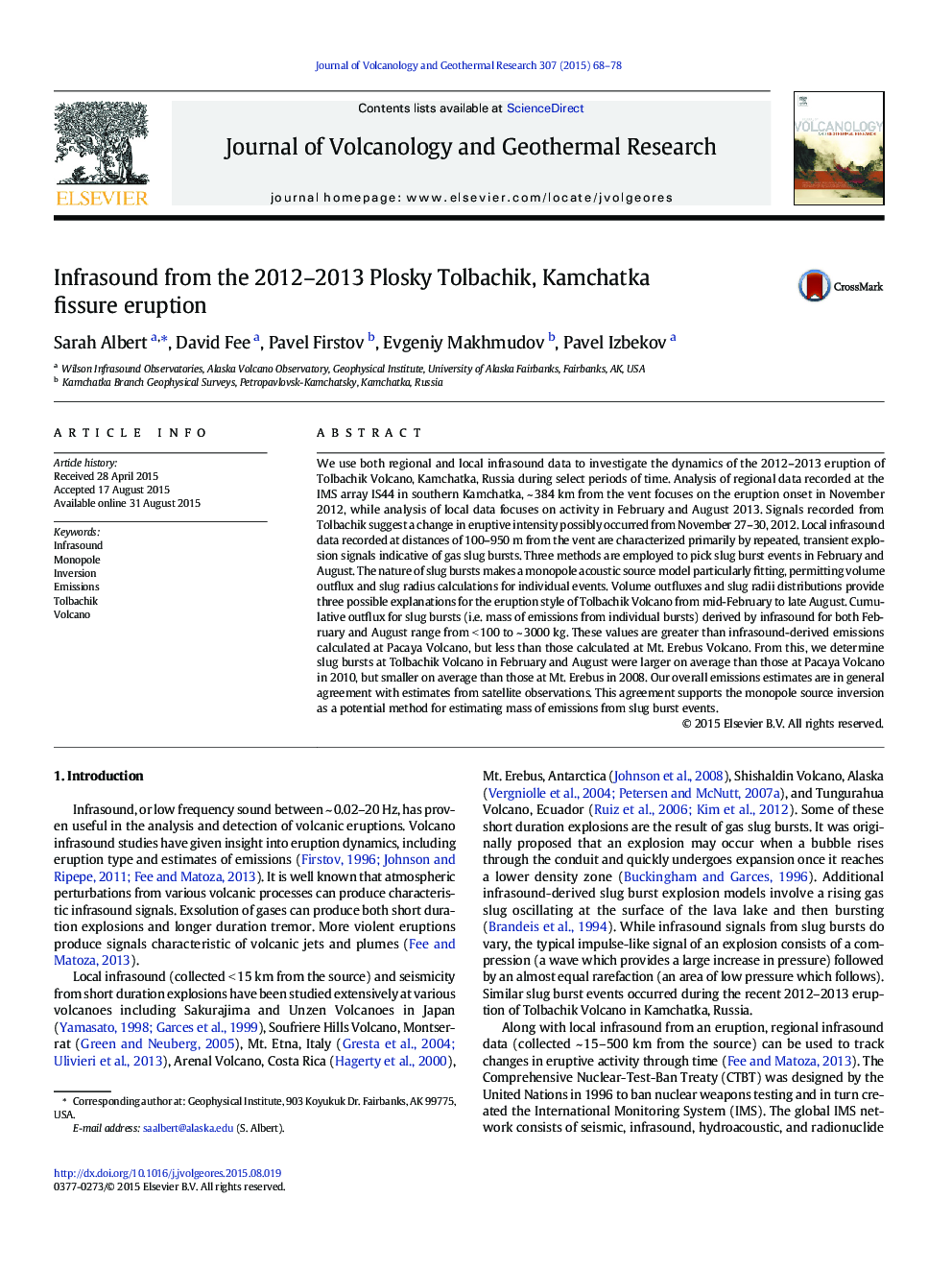| کد مقاله | کد نشریه | سال انتشار | مقاله انگلیسی | نسخه تمام متن |
|---|---|---|---|---|
| 6439626 | 1638315 | 2015 | 11 صفحه PDF | دانلود رایگان |
عنوان انگلیسی مقاله ISI
Infrasound from the 2012-2013 Plosky Tolbachik, Kamchatka fissure eruption
دانلود مقاله + سفارش ترجمه
دانلود مقاله ISI انگلیسی
رایگان برای ایرانیان
موضوعات مرتبط
مهندسی و علوم پایه
علوم زمین و سیارات
ژئوشیمی و پترولوژی
پیش نمایش صفحه اول مقاله

چکیده انگلیسی
We use both regional and local infrasound data to investigate the dynamics of the 2012-2013 eruption of Tolbachik Volcano, Kamchatka, Russia during select periods of time. Analysis of regional data recorded at the IMS array IS44 in southern Kamchatka, ~Â 384Â km from the vent focuses on the eruption onset in November 2012, while analysis of local data focuses on activity in February and August 2013. Signals recorded from Tolbachik suggest a change in eruptive intensity possibly occurred from November 27-30, 2012. Local infrasound data recorded at distances of 100-950Â m from the vent are characterized primarily by repeated, transient explosion signals indicative of gas slug bursts. Three methods are employed to pick slug burst events in February and August. The nature of slug bursts makes a monopole acoustic source model particularly fitting, permitting volume outflux and slug radius calculations for individual events. Volume outfluxes and slug radii distributions provide three possible explanations for the eruption style of Tolbachik Volcano from mid-February to late August. Cumulative outflux for slug bursts (i.e. mass of emissions from individual bursts) derived by infrasound for both February and August range from <Â 100 to ~Â 3000Â kg. These values are greater than infrasound-derived emissions calculated at Pacaya Volcano, but less than those calculated at Mt. Erebus Volcano. From this, we determine slug bursts at Tolbachik Volcano in February and August were larger on average than those at Pacaya Volcano in 2010, but smaller on average than those at Mt. Erebus in 2008. Our overall emissions estimates are in general agreement with estimates from satellite observations. This agreement supports the monopole source inversion as a potential method for estimating mass of emissions from slug burst events.
ناشر
Database: Elsevier - ScienceDirect (ساینس دایرکت)
Journal: Journal of Volcanology and Geothermal Research - Volume 307, 1 December 2015, Pages 68-78
Journal: Journal of Volcanology and Geothermal Research - Volume 307, 1 December 2015, Pages 68-78
نویسندگان
Sarah Albert, David Fee, Pavel Firstov, Evgeniy Makhmudov, Pavel Izbekov,